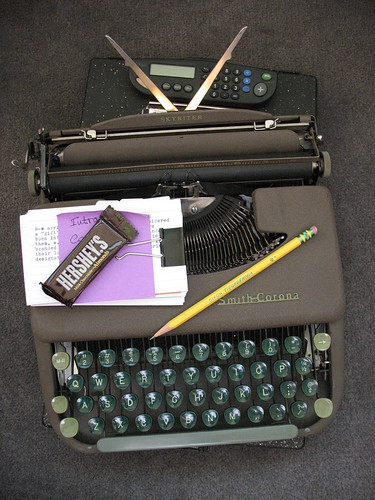When writing about fast-drafting, I’ve often said it’s ok to write badly. I’ve said first drafts are ugly about 95% of the time, and it’s totally fine to write something that you tear apart later, and it’s normal (and completely acceptable) if your first draft sucks.
All of that is true.
But the bit I didn’t cover is just because you finish a draft quickly—even insanely quickly—doesn’t mean it’s going to suck. Just because you speed through a first draft like it’s your job doesn’t mean that what you’ve written is guaranteed to be total word vomit.
I say this, because I’ve heard of writers online getting crucified for finishing 50k in a couple days. I’ve seen some truly amazing people write 100,000 words or more in a week, and then feel discouraged because other writers accuse them of cheating or say that what they write must be total garbage and other rather unpleasant (and untrue) accusations.
Look, the thing about fast-drafting, or first drafting in general, is that your first draft is
likely to be ugly. It’s
likely that you’ll read it back and cringe in certain spots and it’s
likely that when you read it back, you’ll destroy it with a red pen.
But are first drafts guaranteed to be horrible? Not at all. Even first drafts written a couple days can be relatively clean (relatively, because all drafts need work).
The truth is this: every writer is different. Some writers slam out a pretty cleanish draft in a few days and the rest of us envy their ability, but the thing is, it’s not impossible, and it’s not cheating.
Some writers take years to write a first draft, and the draft comes out ok. Or it comes out terrible. Or it comes out wonderful. All of these writers are equally awesome.
Some writers take a couple months to write a first draft, and the draft comes out average. Or it comes out horrible. Or it comes out clean. All of these writers are equally awesome.
Some writers take a few days to write a first draft, and the draft comes out meh. Or it comes out ugly. Or it comes out sparkling. All of these writers are equally awesome.
No two writers work the same way—hell, many writers don’t even work the same way with different manuscripts.
Fun fact: the fastest I’ve ever written a full first draft was in roughly three weeks (though this may change with this NaNo WIP, but I digress). When I read it back a month later, I’d expected it to be pretty rough—after all, I’d never finished a full manuscript in three weeks before (my previous record had been somewhere around a month), so it made sense that this WIP would be a little uglier than usual.
Except it wasn’t. To this day, that draft is the cleanest first draft I’ve ever written.
This NaNo draft, meanwhile? I’ll be the first to admit it’s going to get torn apart in edits and revisions. And that’s ok. Every MS is different.
My point is this: just because something is written quickly doesn’t mean it’s not written well. That’s not to say it’ll be perfect—
nothing is perfect in the first draft stage—but writing quickly doesn’t automatically mean writing badly.
Speed and quality are not mutually exclusive. Every writer is different and it doesn’t matter whether it takes you two days or two years to finish a first draft, or if you need three rounds of revision to make it shine, or twenty before it’s presentable. Your process is yours and yours alone.
Own it. Keep writing. Ignore the haters. And know that you, writer, are amazing.
What is your first draft process like?
Twitter-sized bites:
"Just because something is written quickly doesn't mean it's not written well." (Click to tweet)
Are all first drafts guaranteed to be horrible? Here's why one writer doesn't think so. (Click to tweet)













